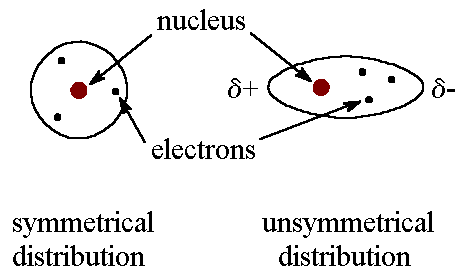However when combined together these forces can have a significant role in binding. These forces are responsible for physical properties like boiling point melting point density vapor pressure viscosity surface tension and solubility of compounds.
You should remember from the kinetic theory of matter see grade 10 10 that the phase of a substance is determined by how strong the forces are between its particles.

Intermolecular forces for dummies. Consists of very weak interactions about 2-4 kJ mol-1 that occur between the hydrophobic regions of molecules. Sometimes referred to as London forces or Van der Waals forces. Moore and Richard Langley ISBN.
Intermolecular forces are attractive forces but not chemical bonds. For example some weak forces of attraction remain between particles in the gas state. In this video we will learn about intermolecular forces or IMFs.
Thus intermolecular forces are much weaker than intramolecular forces. Heres a general chemistry concept that frequently appears on the DAT. Consequently there are dramatic changes in the degree of molecular motion present that accompany a phase change.
Understanding Intermolecular Forces The types of intermolecular forces that occur in a substance will affect its properties such as its phase melting point and boiling point. Jun 19 2016 - Biochemistry For Dummies PDF Download Free By John T. Intermolecular forces such as London Dispersion Forces dipole-dipole and hydrogen bonding are the forces that hold molecules or atoms together.
All intermolecular forces are van der Waals forces. Intermolecular forces are forces that bind individual molecules in a substance due to their positive and negative charges. Write the key terms on the board.
Covalent bonds metallic bonds ionic bonds. Were talking about intermolecular forces not to be confused with intRAmolecular forces which bind the atoms within a single particle ie. Intermolecular forces are the forces of attraction or repulsion that may exist between molecules that are in close vicinity to each other.
We will talk about the three most common. Intermolecular forces forces between chemical species are important in biochemistry. Explain that they are observing a type of intermolecular force and that they will be learning more about these types of forces in todays lesson.
These forces mediate the interactions between individual molecules of a substance. The interactions are individually weak. Once the antenna theory is understood controlling the common-mode radiation becomes a lot easier task.
Use the BACK button on your browser to return to this page. It is all done in more detail than I have used on this present page. Intermolecular forces are responsible for most of the physical and chemical properties of matter.
If you arent confident about hydrogen bonding and other intermolecular forces and their relationship to physical properties it would be a good idea to read this before you go on. Phase changes occur when there are changes in the nature and magnitude of the intermolecular forces between molecules. As well as all he rest of us without a PhD in electromagnetics Dipoles For Dummies is a simple insightful and intuitive discussion of how a dipole antenna works and how the operation is related to the common-mode radiation from a product.
In addition the particle model does not take into account the forces between particles. Intermolecular forces often abbreviated to IMF are the attractive and repulsive forces that arise between the molecules of a substance. The strength of these forces determines what state a substance exists.
IMFs are the various forces of attraction that may exist between the atoms and molecules of a substance due to electrostatic phenomena as will be detailed in this module. Intermolecular attractive forces collectively referred to as van der Waals forces are responsible for the behavior of liquids and solids and are electrostatic in nature. London Dispersion Forces Dipole-Dipole attraction.
These forces determine the physical characteristics of a substance. That is they are not true bonds in the sense of sharing or transferring electrons but are weaker attractive forces. The phase in which a substance exists depends on the relative extents of its intermolecular forces IMFs and the kinetic energies KE of its molecules.
IntERmolecular forces are the interactions that occur between neighboring particles and have a large effect on a compounds physical properties such as the melting point boiling point viscosity etc. This Lesson Guide allows you to preview the variety of activities provided for this module as well as give a suggested flow lesson plan of the lesson. For instance melting a molecular solid involves increasing the temperature.
Among other things intermolecular forces are important to hydrophilic water-loving and hydrophobic water-hating interactions. Type of inter-molecular forces. Dipoles For Dummies Part 1 -- Basic.
Dipole-dipole attractions result from the electrostatic attraction of the partial negative end of one dipolar molecule for the partial positive end of another.
